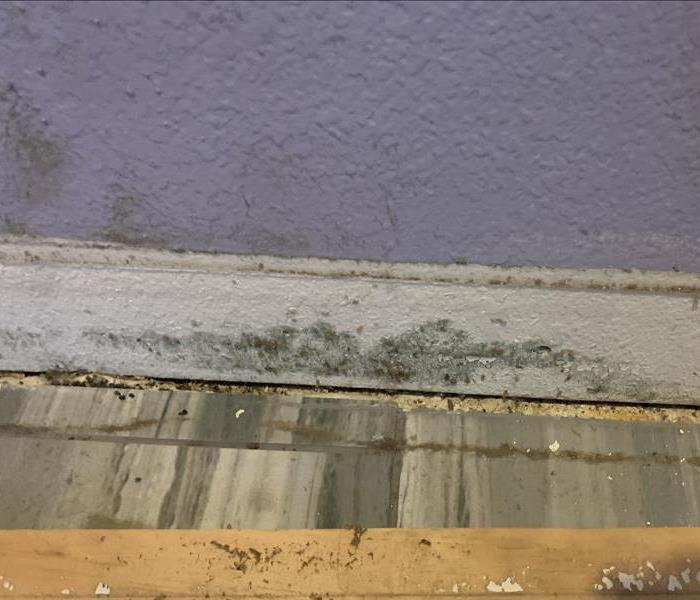How Does Mold Get Into the HVAC System?
7/16/2024 (Permalink)
Mold in your HVAC system is a serious problem that can cause extensive property damage and impact your home's air quality. Understanding how mold gets into the HVAC system is crucial for prevention and effective remediation. In this blog, we will explore the causes of mold growth in HVAC systems and offer some tips to prevent it.
What Causes Mold Growth in HVAC Systems?
Mold spores are a natural part of the environment and can easily enter your home. Once inside, they can find their way into your HVAC (Heating, Ventilation, and Air Conditioning) system. Here are some common ways mold can infiltrate your HVAC system:
1. Moisture Buildup
One of the primary factors for mold growth is moisture. HVAC systems can accumulate moisture through condensation. When warm, humid air passes over the cold evaporator coils, condensation forms. If this moisture isn't properly drained, it can create a perfect environment for mold growth.
2. Dirty Filters
Dirty or clogged filters can restrict airflow, causing moisture to build up in the system. When filters aren't changed regularly, dust and debris can accumulate, providing nutrients for mold spores. Over time, these spores can grow into mold colonies.
3. Poor Ventilation
Proper ventilation is crucial for preventing mold. When there is poor ventilation in your HVAC system, moisture can become trapped. Stagnant air combined with moisture creates an ideal breeding ground for mold. Ensuring your system has adequate ventilation can help reduce this risk.
4. Leaking Ducts
Leaks in your ductwork can allow humid air to enter the system. When this humid air comes into contact with cooler surfaces within the HVAC system, it can cause condensation. This moisture can then lead to mold growth. Regular inspection and maintenance of ductwork can help prevent leaks and moisture buildup.
5. Standing Water
Standing water in any part of your HVAC system can lead to mold growth. This can occur in drip pans, condensate lines, or other areas where water may accumulate. Ensuring that these components are regularly cleaned and maintained is essential.
Signs of Mold in Your HVAC System
Recognizing the signs of mold in your HVAC system early can help prevent extensive damage and health issues. Some common indicators include:
- Musty odors coming from your vents.
- Visible mold growth on vents or around the HVAC unit.
- Increased allergy symptoms or respiratory issues among household members.
- Frequent headaches, nausea, or fatigue.
If you notice any of these signs, it’s essential to address the issue as quickly as possible.
Preventing Mold in Your HVAC System
Prevention is key when it comes to mold in your HVAC system. Here are some tips to help keep your system mold-free:
- Regular Maintenance
Regular maintenance of your HVAC system is crucial. This includes cleaning coils, drip pans, and other components where moisture can accumulate. A professional HVAC technician can perform these tasks and identify any potential issues.
- Change Filters Regularly
Changing your HVAC filters regularly is one of the easiest ways to prevent mold. Clean filters ensure proper airflow and reduce the chance of moisture buildup. Check your filters monthly and replace them as needed.
- Ensure Proper Ventilation
Make sure your HVAC system is properly ventilated. This can help reduce moisture buildup and prevent mold growth. If necessary, consider installing a dehumidifier to control humidity levels in your home.
- Inspect Ductwork
Regularly inspect your ductwork for leaks and other issues. Seal any leaks promptly to prevent humid air from entering the system. Properly insulated ducts can also help maintain consistent temperatures and reduce condensation.
- Keep the Area Dry
Ensure that the area around your HVAC system is dry. Fix any leaks or water issues promptly, and use a dehumidifier in damp areas to keep humidity levels in check.
Mold in your HVAC system can cause serious damage to your home. By understanding how mold gets into the system and taking preventive measures, you can keep your HVAC system mold-free. Regular maintenance, proper ventilation, and prompt attention to moisture issues are key to preventing mold growth. If you suspect mold in your HVAC system, contact a professional mold remediation service like SERVPRO® to ensure safe and effective removal.





 24/7 Emergency Service
24/7 Emergency Service